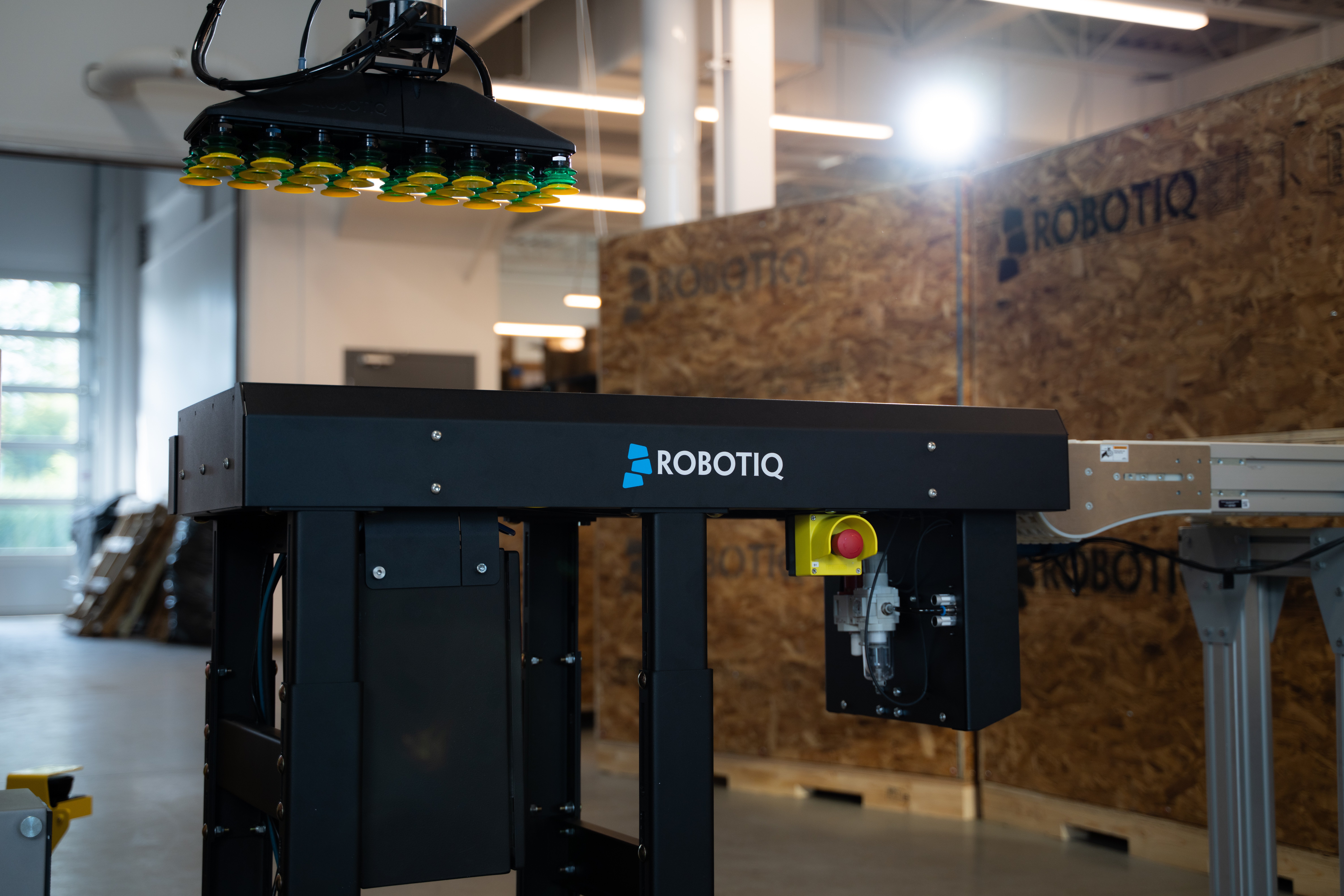If your team stacks boxes all day, ergonomics shouldn’t be an afterthought; it should be the first thing you think about.
Manual palletizing is one of the most physically demanding jobs on the factory floor. Day in and day out, workers lift heavy loads, twist awkwardly, and reach above shoulder height—all of which are major ergonomic red flags. These risks aren’t just uncomfortable; they can lead to serious injuries, chronic pain, and costly downtime.
Let’s walk through the basics every factory manager should know to create a safer, more sustainable work environment.
What is ergonomics, really?
Ergonomics is the science of designing work tasks to fit the people doing them. It’s about reducing physical strain, improving comfort, and preventing injuries—not just reacting when someone gets hurt.
In a palletizing context, good ergonomics means adjusting processes so workers don’t have to:
- Bend or twist repeatedly
- Lift heavy loads from low or high positions
- Perform the same motion thousands of times a day
When these risk factors go unchecked, injuries follow—and so do rising costs.
The hidden costs of poor ergonomics
Ergonomic injuries, often called musculoskeletal disorders (MSDs), are one of the top causes of lost-time injuries in manufacturing. And palletizing is a frequent culprit.
Here’s what poor ergonomics can cost you:
- Increased absenteeism: One injured employee can be out for weeks—or longer.
- Higher insurance premiums: Repeated strain injuries drive up your workers’ comp costs.
- Turnover and morale issues: Workers are more likely to leave if their bodies are constantly under strain.
- Reduced productivity: Fatigue, discomfort, and injuries lead to slower cycle times and more errors.
In short, ignoring ergonomics means gambling with your team’s health and your plant’s bottom line.
How to spot the warning signs
Before injuries happen, there are often red flags. Here’s what to look out for:
- Workers modifying their movements to avoid pain
- Complaints of soreness at the end of a shift
- High rates of absenteeism or turnover in palletizing roles
- Boxes being stacked too high or starting too low
- Manual lifting of heavy or awkward loads for long durations
Pay attention during Gemba walks. Watch how employees move. Are they reaching, straining, or rushing to keep up? Those micro-movements add up.
What you can do about it
You don’t need an ergonomics degree to make a difference. Here are practical steps you can take:
✅ Rotate Tasks
Minimize repetitive strain by rotating employees between physically demanding and less strenuous tasks throughout the shift.
✅ Adjust Box Heights
Stack boxes at waist level to avoid reaching too low or too high. Pallet lifts or adjustable platforms can help.
✅ Provide Proper Footwear and Mats
Anti-fatigue mats and supportive shoes can reduce strain during long shifts.
✅ Automate the Worst Tasks
When possible, take humans out of the high-risk zone. Collaborative robots (cobots) are ideal for palletizing because they:
- Stack with perfect form, 24/7
- Reduce lifting, bending, and twisting for your team
- Fit into tight spaces without reworking your line
Even better,
Robotiq Palletizing Solutions can be installed in under three days—so you start seeing ergonomic and productivity gains right away.
A win-win for people and productivity
Improving ergonomics isn’t just about compliance—it’s about caring for your people and improving your operations.
When your team feels better, they work better. You reduce injuries, turnover, and downtime. And by automating the most physically taxing tasks, you can upskill workers to focus on more rewarding work.
Because at the end of the day, a safe team is a productive team.
💻 Join our ergonomics webinar with certified safety expert Carla Silver – register today!
📘 Want to take a deep dive? Download our Ergonomics ebook, also by Carla Silver.
![]()

The post “Ergonomics 101 for factory managers” by [email protected] (Samuel Bouchard) was published on 06/13/2025 by blog.robotiq.com

























